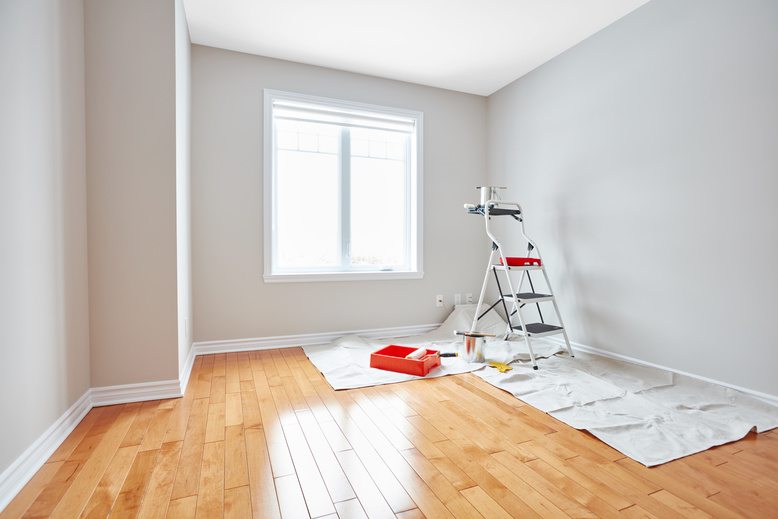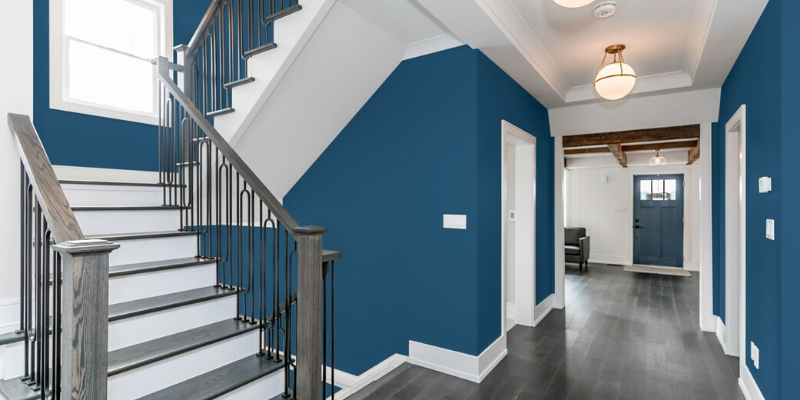Expert Color Consultation in Lakewood for a Stylish and Cohesive Interior Palette
Expert Color Consultation in Lakewood for a Stylish and Cohesive Interior Palette
Blog Article
Enhance Your Interior Decoration With Comprehensive Shade Consultation
The integration of color assessment into indoor layout provides an unique possibility to refine and boost the aesthetic and psychological resonance of a room. By engaging with a skilled shade consultant, you can browse the intricacies of shade choice, making sure that your options not just enhance architectural features but also reverberate with personal style and emotional influence.
Benefits of Color Appointment

In addition, shade examination help in making best use of natural light and optimizing spatial assumption. Lighter colors can make an area show up more large, while darker tones produce an intimate setup. Cleveland Metro Painting Specialists. This strategic application of color can significantly influence the overall setting of any type of interior space
Additionally, expert specialists possess a comprehensive understanding of present fads and timeless standards, making certain that the chosen shades will stay appealing in time. This insight can save clients from pricey redesigns in the future. Finally, shade examination empowers clients by supplying them with a clear vision and instructions, fostering self-confidence in their layout options and eventually causing an extra successful and rewarding interior decoration result.
Understanding Color Psychology
The importance of shade psychology in interior decoration can not be overstated, as it explores the psychological and emotional effects that numerous shades can evoke in people. Colors can influence mood, behavior, and also efficiency, making them a vital consideration in any type of style task.
For circumstances, cozy shades such as red, orange, and yellow are frequently related to energy and warmth. They can boost sensations of enjoyment and convenience, making them appropriate for social spaces like living areas or kitchens. Alternatively, trendy colors like blue, green, and purple have a tendency to stimulate peace and peace, making them suitable for bed rooms or meditation areas.
Additionally, making use of neutral tones can create a well balanced environment by enabling the bolder shades to stand out without overwhelming the senses. Comprehending these psychological effects enables designers to develop rooms that not only look cosmetically pleasing however also promote emotional health.
Incorporating shade psychology right into interior decoration entails a thoughtful choice of hues tailored to the designated function of each area, inevitably enhancing the general experience for its occupants. This understanding is crucial for accomplishing a harmonious and useful indoor atmosphere.
The Shade Wheel Clarified
Recognizing the connections in between tones is important for efficient interior decoration, and the color wheel acts as a valuable device in this procedure. The shade wheel, developed by Isaac Newton in the 17th century, highlights the range of shades organized in a round format. It consists of primaries-- red, blue, and yellow-- that can not be produced by blending various other colors. Second shades, formed by integrating main colors, include environment-friendly, orange, and purple. Tertiary colors arise from blending a main and a secondary color, bring about colors such as turquoise and red-orange.
The shade wheel helps developers grasp the relationships in between shades, consisting of corresponding, similar, and triadic systems. Complementary colors, positioned contrary each other on the wheel, produce vivid contrasts that can invigorate a space.
Using the shade wheel in indoor style not only improves aesthetic appeal yet likewise stimulates certain emotions and atmospheres, making it a crucial reference for shade appointment. Understanding these relationships eventually equips designers to produce rooms that are both aesthetically captivating and functional.
Selecting the Right Scheme
A well-chosen shade system can combine a room, enhance its attributes, and evoke preferred feelings. Various spaces serve different features and call for schemes that mirror their intended use; for instance, serene shades such as soft blues or environment-friendlies work well in bed rooms, promoting leisure.
Following, take into account the natural light readily available. Light can significantly modify exactly how shades show up, so it is essential to analyze the room at different times of the day. Additionally, consider existing architectural elements and home furnishings. An unified palette should enhance these features, producing a natural appearance throughout the space.
When choosing shades, use the 60-30-10 regulation, which Home Page recommends that 60% of the space need to be a dominant color, 30% a second shade, and 10% an accent color. This proportion makes sure equilibrium and visual rate of interest (Cleveland Metro Painting Specialists). Example shades on the wall surfaces before committing, as this allows you to see exactly how the shades communicate with one an additional and the overall setting they create in your indoor style job.
Functioning With a Shade Specialist

When dealing with a shade specialist, the process commonly begins with a preliminary assessment. During this meeting, you'll discuss your vision, preferences, and the existing aspects in your space. The expert will certainly analyze your demands and might suggest details shade combinations that line up with your goals.
After establishing a direction, the expert will certainly offer examples and aesthetic aids to aid you imagine the browse around these guys proposed color schemes. This action is important, as shades can appear differently under varying lighting problems.
In addition, a color consultant can assist you in selecting complementary home furnishings, artwork, and accessories to integrate with your selected scheme. By working together closely, you can accomplish a refined aesthetic that boosts your insides and creates an inviting environment. Ultimately, the experience of a color professional can substantially boost the total influence of your design task.
Conclusion
In summary, detailed color assessment offers as a crucial device for enhancing indoor design. By leveraging expert knowledge of color psychology and spatial dynamics, a customized shade palette can be developed to stimulate particular emotions and develop a harmonious environment.
By engaging with a skilled shade specialist, you can browse the complexities of shade choice, guaranteeing that your choices not just enhance architectural attributes however also reverberate with individual style and emotional impact. It comprises primary colors-- red, blue, and yellow-- that can not be created by blending various other shades.The shade wheel helps designers grasp the partnerships in between colors, consisting of complementary, similar, and triadic systems.When picking shades, make use of the 60-30-10 regulation, which recommends that 60% of the space need to be a read leading color, 30% a secondary color, and 10% an accent shade. By leveraging expert understanding of color psychology and spatial dynamics, a tailored color combination can be created to stimulate specific emotions and produce a harmonious setting.
Report this page